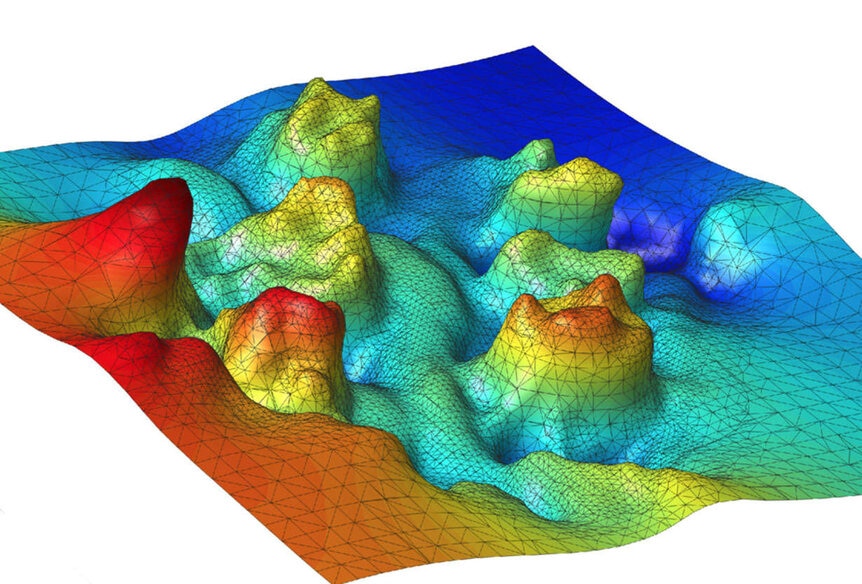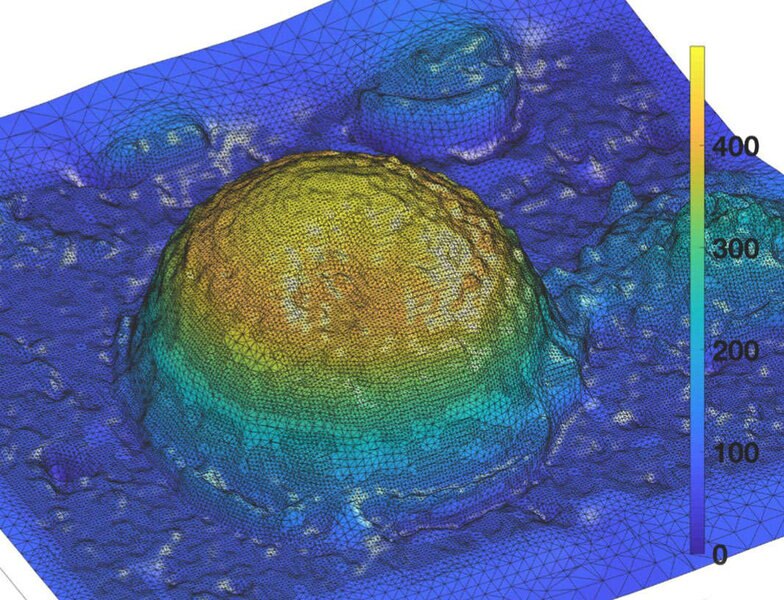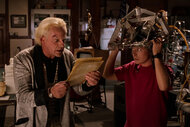Create a free profile to get unlimited access to exclusive videos, sweepstakes, and more!
Human tongue doppelganger 3D-printed by scientists is totally not scary at all…

If science could come up with an artificial human mouth that spouts random prayers, it was only a matter of time before a biomimetic tongue appeared.
Tongues are underrated. Your tongue is not only capable of tasting food, but it hydrates your mouth, gives you the full experience of food from texture to flavor, starts the digestion process, and is part of the reason you can talk. It can also potentially save you from a trip the ER if something tastes off because it was expired or poisoned. Now (that praying artificial mouth had working lips, but it was tongueless), scientists have created a synthetic tongue surface much less scary than whatever that thing was in Beetlejuice (above) — which can also provide valuable information without putting human testers at risk during the pandemic.
Principal Investigator Anwesha Sarkar, Professor of Colloids and Surfaces at the University of Leeds, figured out how to make the tongue surface as biologically accurate as possible, while colleague Rik Sarkar, Deputy Director of the Laboratory for Foundations of Computer Science at the University of Edinburgh, developed its computational aspects. They co-authored a study recently published in ACS Applied Materials & Interfaces.
“Creating this artificial mimetic surface with relevant properties that emulates the intricate architectural features and, more importantly, the mechanosensing and tribological performance of the human tongue will help to detect tribological signatures (i.e. friction and lubrication) in presence of these products,” Anwesha Sarkar told SYFY WIRE.
Oral tribology, or the study of oral friction and lubrication, influenced the development of this robo-tongue, which is capable of doing just about everything the one in your mouth can. Its textured surface can self-hydrate. This makes it able to test out how much lubrication it can get when it touches everything from wine to toothpaste, and also to investigate what could cause a lack of lubrication. It can perceive aspects of taste and texture that can make or break how appetizing something is, and potentially identify adulterated or counterfeit food. It also gauges the side effects of medications that could possibly give you dry mouth.
The reason your tongue is so hypersensitive is because of all those tiny bumps known as papillae. There are filiform, or hairlike, papillae, and fungiform papillae, which appear like mushrooms up close. When food comes into contact with these papillae, you sense its presence and movement, which tells you how to chew and swallow depending on what it is you’re eating. This is how you know what needs more or less chewing to make it go down.
“We found that the distribution of papillae on human tongue is very effective,” Rik Sarkar told SYFY WIRE. “They are arranged so that they can detect the tiniest movements. How these arrangements are created is hard to understand and replicate. However, a completely random distribution is effective, and performs surprisingly similarly to arrangements on the real tongue.”
To bring this robo-tongue to life and make it capable of mechanosensing, the research team used silicone molds of the tongues of healthy volunteers. 3D optic scanning helped them recreate texture and dimension before molds of the tongue impressions were 3D-printed using mathematical models and computer simulations. The team had to be sure that the surface was able to generate pressures that were as close as possible to actual pressures in the mouth. These molds were used to make an artificial tongue surface out of ultra-soft, hydrophilic elastomers. Rik Sarkar’s new concept of collision probability will have a huge effect on how the artificial tongue senses things as well as how we understand what is behind sensing in an actual human tongue.
“Collision probability is simply the chance that a small movement of a food particle will collide with some papilla, and be detected,” he said. “Imagine a small bit of food moving on your tongue. How likely are you to detect it? So it is related to the sensing accuracy of the tongue.”
The research team is also looking to understand more about how fluids interact with the oral cavity and allow us to perceive textures and tastes. Rheology, or the physics of flow and deformation, has given scientists a better understanding of how things flow in the mouth. Final versions of the tongue surfaces were tested on a rheometer for properties such as friction, lubrication, and stress tolerance. Anwesha Sarkar believes there is much more we can learn about texture and flavor perception from rheology.
“The only way to study this is really create a biomimetic tongue surface as friction depends both on the fluid and also on the properties of the surface,” she said.
Too bad the rest of us don’t have an extra tongue around to taste-test something suspicious without actually having to taste it.
















